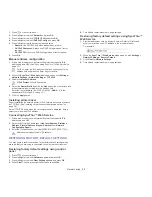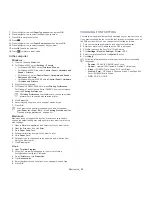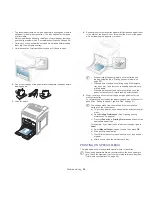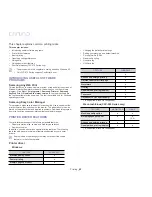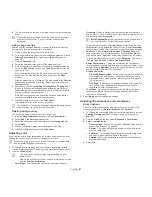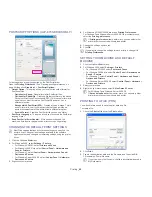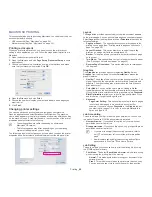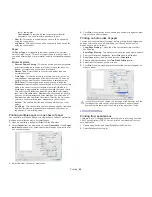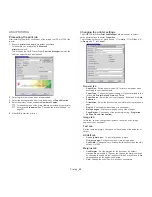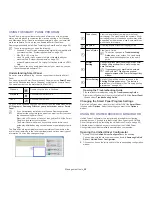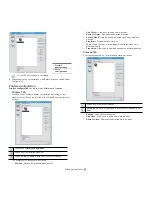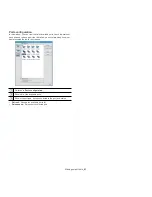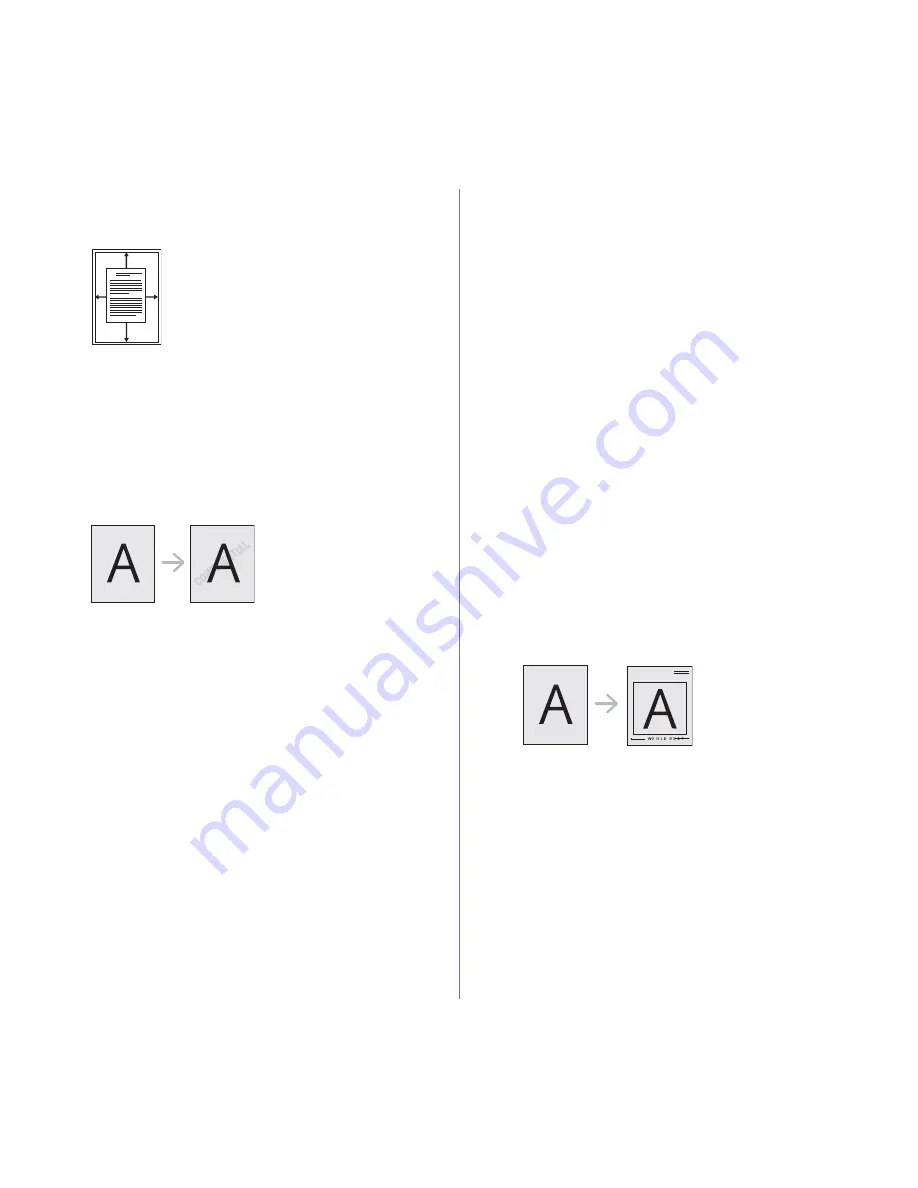
Printing
_ 46
Fitting your document to a selected paper size
This printer feature allows you to scale your print job to any selected paper
size regardless of the document size. This can be useful when you want to
check fine details on a small document.
A
1.
To change the print settings from your software application, access
Printing Preferences
(See "Opening printing preferences" on page 44).
2.
Click the
Paper
tab.
3.
Select the paper size you want from the
Fit to Page
.
4.
Select the
Size
,
Source
, and
Type
in
Paper Options
.
5.
Click
OK
or
until you exit the
window
U
Using watermarks
The watermark option allows you to print text over an existing document.
For example, you use it when you want to have large gray letters reading
“
DRAFT
” or “
CONFIDENTIAL
” printed diagonally across the first page or all
pages of a document.
There are several predefined watermarks that come with the machine. They
can be modified, or you can add new ones to the list.
Using an existing watermark
1.
To change the print settings from your software application, access
Printing Preferences
(See "Opening printing preferences" on
page 44).
2.
Click the
Advanced
tab, and select the desired watermark from the
Watermark
drop-down list. You will see the selected watermark in
the preview image.
3.
Click
OK
or
until you exit the print window
U
Creating a watermark
1.
To change the print settings from your software application, access
Printing Preferences
(See "Opening printing preferences" on
page 44).
2.
From the
Advanced
tab, select
Edit
from the
Watermark
G
drop-down
list. The
Edit Watermarks
window appears.
3.
Enter a text message in the
Watermark Message
box. You can
enter up to 256 characters. The message appears in the preview
window.
When the
First Page Only
box is checked, the watermark prints on
the first page only.
4.
Select watermark options.
You can select the font name, style, size, and shade from the
Font
Attributes
section, as well as set the angle of the watermark from
the
Message Angle
section.
5.
Click
Add
to add a new watermark to the
Current Watermarks
list.
6.
When you have finished editing, click
OK
or
until you exit the
window.
To stop printing the watermark, select
None
from the
Watermark
drop-down list.
Editing a watermark
1.
To change the print settings from your software application, access
Printing Preferences
(See "Opening printing preferences" on
page 44).
2.
Click the
Advanced
tab, select
Edit
from the
Watermark
G
drop-down
list. The
Edit Watermarks
window appears.
3.
Select the watermark you want to edit from the
Current Watermarks
list and change the watermark message and options.
4.
Click
Update
to save the changes.
5.
Click
OK
or
until you exit the
window.
Deleting a watermark
1.
To change the print settings from your software application, access
Printing Preferences
(See "Opening printing preferences" on
page 44).
2.
Click the
Advanced
tab, select
Edit
from the
Watermark
G
drop-down
list. The
Edit Watermarks
window appears.
3.
Select the watermark you want to delete from the
Current
Watermarks
list and click
Delete
.
4.
Click
OK
or
until you exit the
window.
Using overlay (PCL driver only)
An overlay is text and/or images stored in the computer hard disk drive
(HDD) as a special file format that can be printed on any document.
Overlays are often used to take the place of letterhead paper. Rather than
using preprinted letterhead, you can create an overlay containing exactly
the same information that is currently on your letterhead. To print a letter
with your company’s letterhead, you do not need to load preprinted
letterhead paper in the machine just print the letterhead overlay on your
document.
Creating a new page overlay
To use a page overlay, you must create a new page overlay containing
your logo or image.
1.
Create or open a document containing text or an image for use in a
new page overlay. Position the items exactly as you wish them to
appear when printed as an overlay.
2.
To save the document as an overlay, access
Printing Preferences
(See "Opening printing preferences" on page 44).
3.
Click the
Advanced
tab, and select
Edit
from the
Text
drop-down
list.
Edit Overlay
G
window appears.
4.
In the
Edit Overlay
window, click
Create
.
5.
In the
Save As
window, type a name of up to eight characters in the
File name
box. Select the destination path, if necessary. (The
default is C:\Formover.)
6.
Click
Save
. The name appears on the
Overlay List
.
7.
Click
OK
or
until you exit the
window
U


